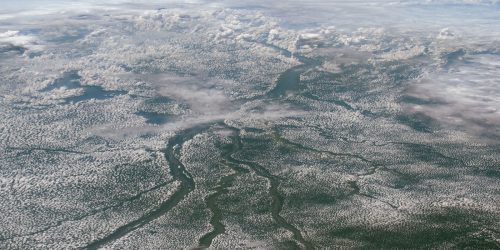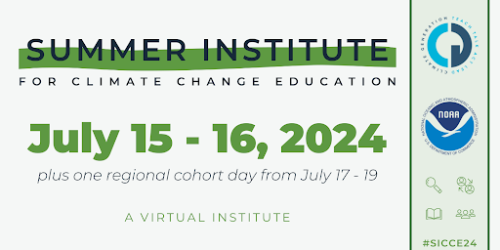CPO’s Climate Variability and Predictability (CVP) program is announcing four new two-year projects originally funded in Fiscal Year 2023 (FY23) that aim to identify and understand key land-atmosphere processes that influence coupled-model precipitation biases in the Continental United States (CONUS). The competitively selected projects total $1.8 million in grants1.

Credit: Pixabay
The Earth system has many interacting variables. NOAA and its partners’ modeling capabilities depend on accurately accounting for all variables, including key land-atmospheric processes. Currently, there is a need to improve the identification and understanding of these key processes, as they influence biases in the simulation of precipitation in models across the CONUS at the subseasonal-to-seasonal (S2S) timescales.
This competition solicited projects in response to the Disaster Relief Supplemental Appropriations Act (DRSA) from 2022, which called for “improvements to operational and research weather and climate supercomputing and dissemination infrastructure, observing assets, and satellites, along with associated ground systems, used for hurricane intensity and track prediction; precipitation and flood prediction, forecasting, and mitigation; and wildfire research, prediction, detection, forecasting, and monitoring,” aligning with the goals of NOAA’s Precipitation Prediction Grand Challenge Strategy 2020- 2030 (PPGC). NOAA’s PPGC initiative is aimed at providing more accurate, reliable, and timely precipitation forecasts across timescales from weather to S2S to seasonal-to-decadal (S2D) through the development and application of a fully coupled Earth system prediction model.
The selected research collaborations will make a number of key new advances including the development of new methods to assess the impact of soil moisture in both precipitation extremes and in landfalling tropical cyclones. The effects of surface heat fluxes in winter events and the interaction between moisture and the footprint of extreme precipitation events will also be explored. Ultimately, these projects will support the goal of getting NOAA to a future in which it delivers a comprehensive suite of high-fidelity precipitation predictions over various timescales.
The four new projects2 funded are:
- The Role of Land Surface Variability and Change in Modulating the Variability and Predictability of Precipitation Extremes
- Overview: This project will investigate the evolving role of land-atmosphere interactions on precipitation variability and predictability in the recent past, present, and near future. Using a time-slice approach with the Unified Forecast System, the research will primarily focus on the separate and combined impacts of evolving land use/cover and soil moisture climatic regimes.
- Lead PI: James L. Kinter, George Mason University
- Co-PI(s): Paul Dirmeyer, George Mason University
- Hydroclimate footprint of extreme CONUS precipitation events detected by a moisture tagging capability
- Overview: Most climate models are known to have large biases in simulating many aspects of land-atmosphere interactions, creating big challenges for the modeling and forecasting communities. This project will develop a new method to investigate the hydrological cycle across CONUS by using a fully coupled global model to trace water vapor transport driven by observed large-scale circulation variability. The method will advance the understanding of atmospheric teleconnections and their impact on land-atmosphere interactions and extreme precipitation events (including flood and drought) over the past four decades.
- Lead PI: Qinghua Ding, University of California, Santa Barbara
- Co-PI(s): Hailan Wang, NOAA/CPC
- The Impact of Surface Fluxes on Rain-On-Snow Events in the U.S. and Improving Their Representation in Numerical Models
- Overview: Large and rapid snowmelt events can be hazardous, particularly with the presence of concurrent rainfall. Rain-on-snow (ROS) precipitation events can greatly increase the potential for flooding, with liquid precipitation and melted snow both contributing to runoff, affecting life and property. This project will run a series of numerical model simulations in different topographic regions of the U.S. to evaluate the representation and potential biases in ROS events and their associated turbulent heat fluxes within the land-atmosphere coupling.
- Lead PI: Zachary J. Suriano, Western Kentucky University
- Co-PI(s): Ross D. Dixon, Tirthankar Roy, University of Nebraska – Lincoln
- Investigating the Role of Land-Surface Conditions on Landfalling Tropical Cyclones and the Preceding Processes that Influence Antecedent Soil Moisture and Temperature on S2S Timescales
- Overview: Landfalling tropical cyclones (TCs) produce intense winds, heavy precipitation, and damaging storm surges along the Gulf and East coast of the U.S. There is growing evidence that TCs can retain their strength or even intensify over land when high soil moisture conditions are in place before landfall. This project will assess the ability of forecast models to represent the preceding rainfall events from different storm-types (mesoscale convective systems, tropical cyclones, extratropical cyclones) that contribute to antecedent soil moisture conditions on the S2S timescales.
- Lead PI: Gabriel J. Kooperman, University of Georgia
- Co-PI(s): Wei-Ching Hsu; J. Marshall Shepherd, University of Georgia; Kevin A. Reed, Stony Brook University
1The funding will be distributed over the life of the projects and future-year funding is conditional on appropriations.
2At the time of publication, all awards may not have been accepted by recipient institutions









